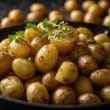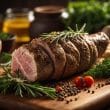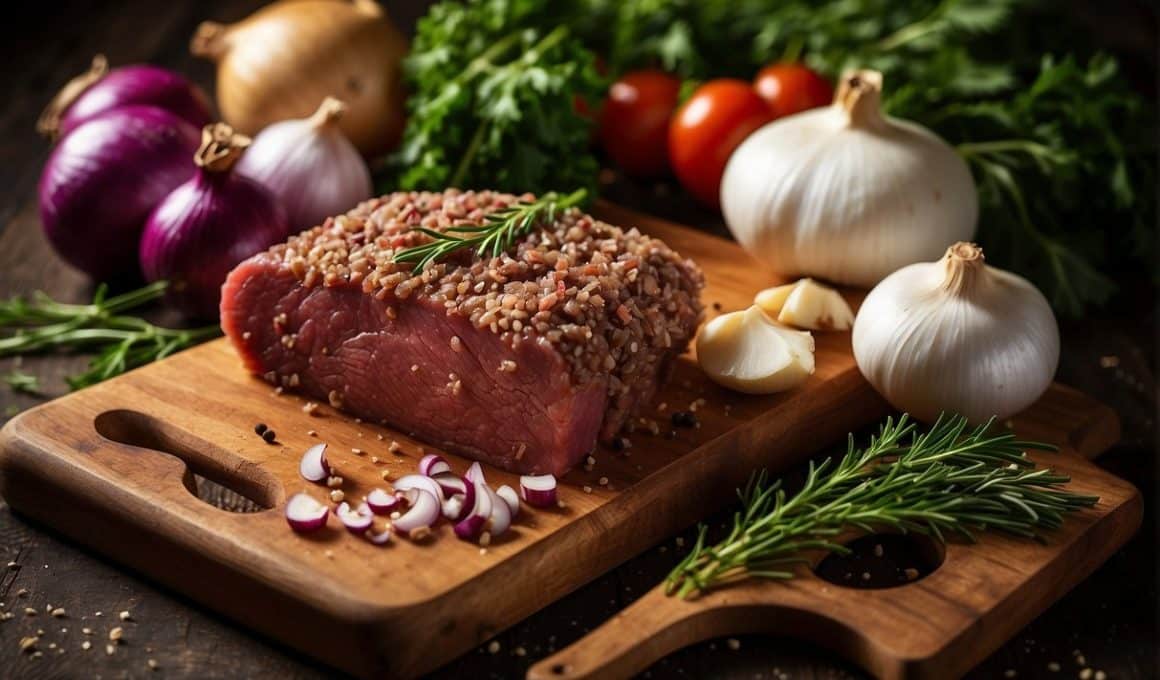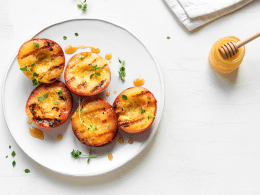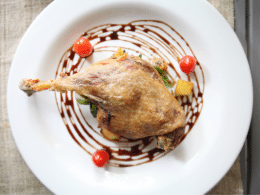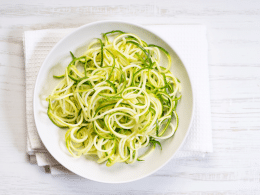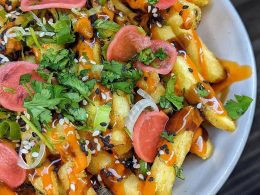Venison mince is a versatile ingredient that offers a rich and gamey flavor to a multitude of dishes. As a leaner alternative to beef or pork mince, it’s a popular choice for those looking to add a unique twist to their meals. From the traditional, such as pies and bolognese, to more exotic preparations like Moroccan-inspired dishes, venison mince can elevate a simple recipe to something truly special. While not as commonplace as other types of meat, it’s increasingly being recognized for its culinary diversity and the depth it can add to both savory and sweet creations.
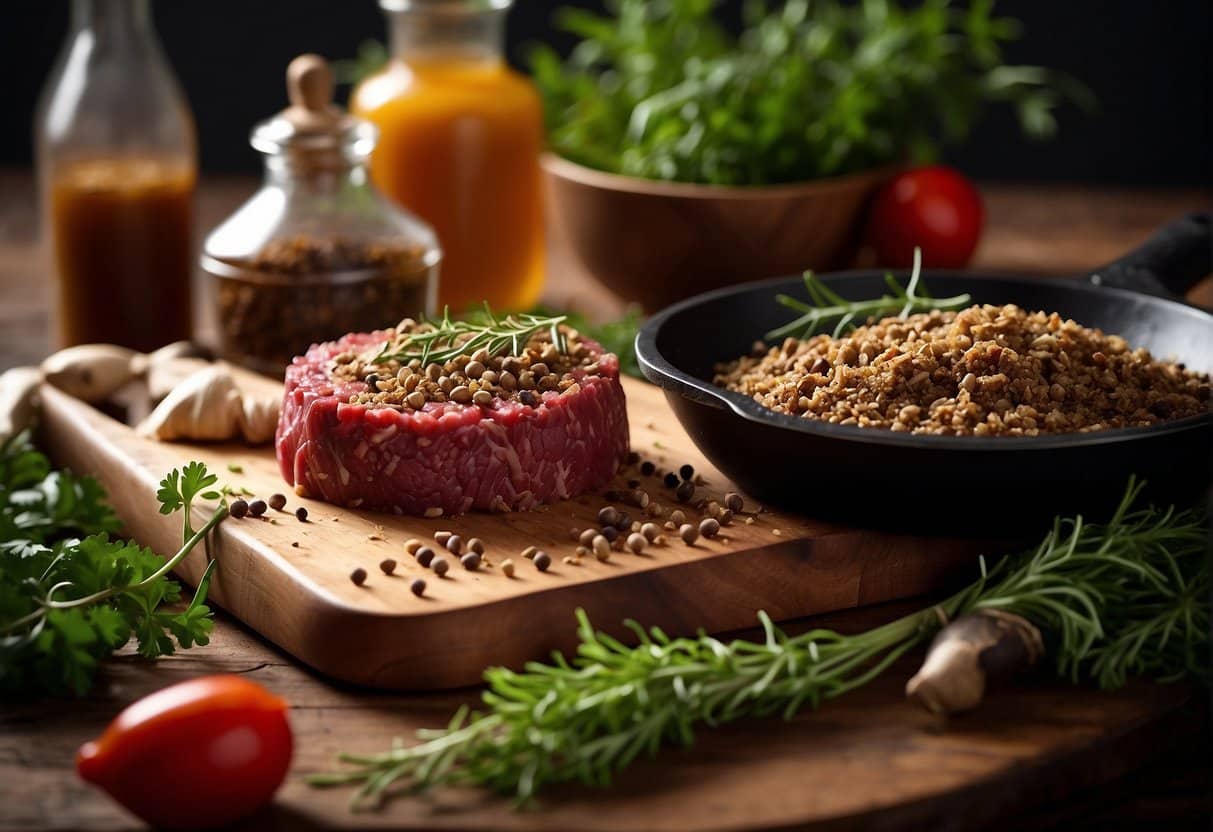
The key to unlocking the potential of venison mince lies in the selection of seasonings and cooking techniques that complement its distinct flavor profile. Ingredients like juniper berries, rosemary, and robust wines often pair well with it, while techniques such as slow cooking can help tenderize the meat. When cooked correctly, venison mince yields succulent, flavorful dishes that celebrate the essence of wild game. Whether incorporated into meatballs with a berry sauce or used in a savory mincemeat pie, venison mince adapts to various cooking styles, satisfying the palates of adventurous eaters and traditionalists alike.
Key Takeaways
- Venison mince provides a rich, gamey flavor and can be substituted for beef or pork in many recipes.
- Seasonings and cooking methods should complement venison’s unique taste for best results.
- Venison is adaptable for both sweet and savory dishes, making it a versatile meat choice.
Understanding Venison
In my exploration of game meats, I’ve come to appreciate that venison stands out both for its distinct taste and its adaptability in various dishes. Particularly, venison mince reveals itself as a versatile and nutritious alternative to traditional meats.
Types of Venison
When I discuss venison, I am referring to the meat from deer. The type of deer, such as white-tailed, mule, or red deer, can influence the flavor and texture of the meat. Freshness is paramount with all game meats, so I ensure that the venison I use is as fresh as possible to preserve its quality and taste.
| Deer Species | Meat Characteristics |
|---|---|
| White-tailed | Lean and tender |
| Mule | Rich and robust |
| Red | Dense and flavorful |
Benefits of Venison Mince
Venison mince, specifically, is a lean and healthy meat option that I find offers several benefits. It is lower in fat than many conventional meats, like beef, making it a heart-healthier alternative. Rich in protein and iron, venison mince can be a pivotal component in my nutritious diet. Additionally, the unique flavor of venison makes it a refreshing change from the typical meat choices I might have on my menu.
- Leaner alternative: Less fat compared to beef or pork
- High in protein: Essential for my muscle health and repair
- Rich in iron: Critical for oxygen transport and metabolism
Through incorporating venison mince into my meals, I capitalize on these benefits while expanding my culinary repertoire beyond traditional meats.
Essential Ingredients
In crafting exquisite venison mince recipes, I recognize the pivotal role that certain ingredients play. They impart the distinct flavors and aromas that make these dishes stand out.
Seasonings and Spices
In the realm of seasonings, salt and pepper are fundamental for enhancing the natural savoriness of venison mince. The addition of herbs like rosemary or thyme can provide an aromatic complexity, while spices such as cinnamon or nutmeg might be included in traditional mincemeat recipes for a warm depth of flavor. When making Old Fashioned Venison Mincemeat, spices play an integral role in achieving that signature taste.
Accompanying Vegetables
Onions and garlic serve as the foundational aromatics, providing a rich base note to many venison mince dishes. A finely chopped carrot offers a hint of sweetness and texture, rounding out the flavor profile. These vegetables are essential, whether sautéing them as the start of a recipe, like in various Delicious Venison Mince Recipes, or incorporating them into the mince mixture itself.
Fats and Oils
When it comes to cooking fats, olive oil is a chef’s staple for sautéing, thanks to its ability to withstand moderate cooking temperatures and its subtle flavor contribution. For more traditional recipes, beef suet is often used, particularly in mincemeat preparations, as it imparts a rich mouthfeel and authentic taste to the dish. My use of fats is always measured, ensuring the venison mince retains moisture without overpowering the other flavors present.
Preparation Basics
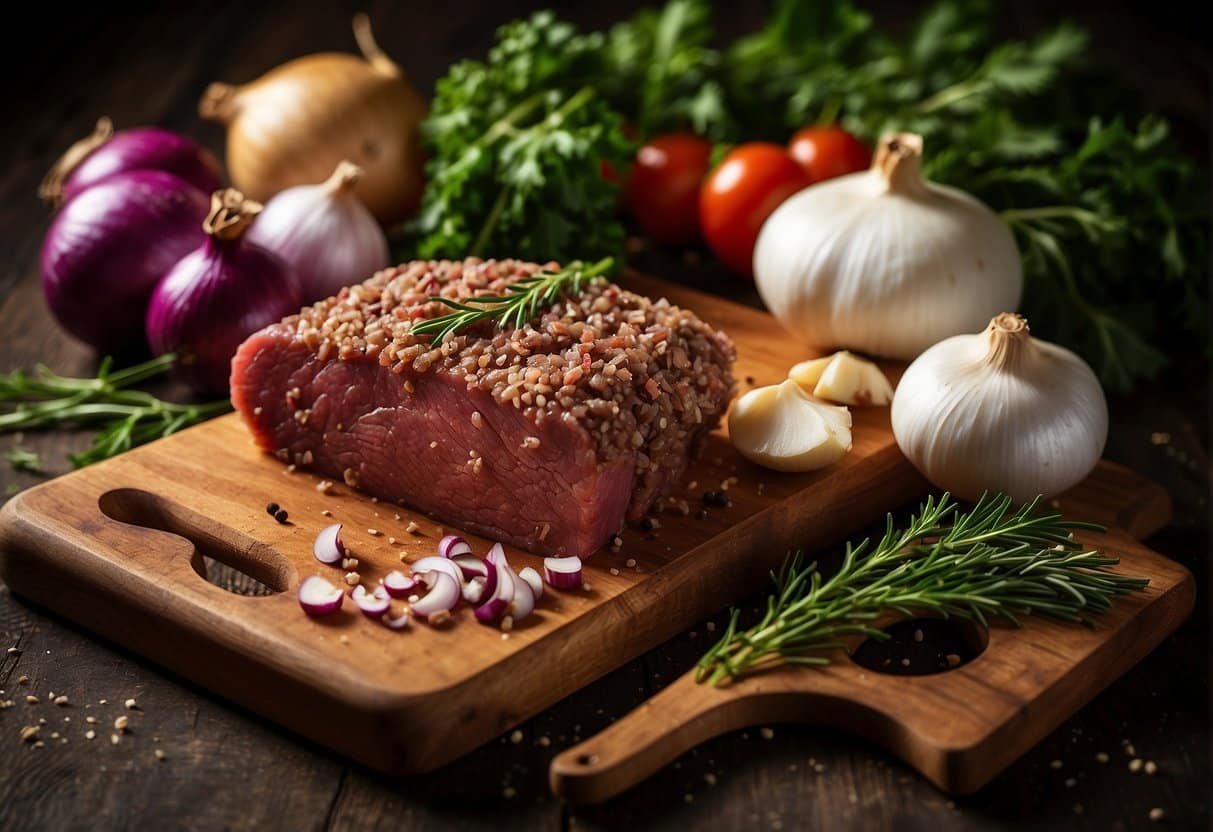
Before diving into specific recipes, it’s crucial to understand how to properly handle and store venison mince, as well as how to prepare vegetables and aromatics. These steps will ensure that the flavors meld beautifully and the venison is safe to eat.
Handling and Storing Venison Mince
I always pay close attention to how I handle and store my ground venison to maintain its quality and safety. Freshly minced venison should be kept refrigerated and used within two days. If I need to store it for a longer period, I ensure it’s tightly wrapped and freeze it. Frozen mince can last for up to three months. To thaw, I place the venison in the refrigerator overnight or use the defrost setting on my microwave if I need it more quickly.
When it’s time to cook, browning the ground venison is fundamental. I do this by heating a bit of oil in a pan, spreading the mince in an even layer, and cooking it until it develops a rich, brown crust, which locks in flavor.
Preparing Vegetables and Aromatics
The right vegetables and aromatics can elevate the taste of my venison mince dishes to a new level. I start by finely dicing onions and carrots, ensuring they are similar in size for even cooking. Here’s a simple guide I follow for prepping:
- Onions: Peel and finely chop; they should be golden and translucent before adding the venison mince.
- Carrots: Peel and dice into small pieces; they add a subtle sweetness and should be sautéed until slightly tender.
After prepping, I cook these ingredients in a bit of olive oil until they are softened, which creates a flavorful base for the venison. If beef broth is part of the recipe, I add it after the vegetables are ready and bring it to a simmer before introducing the ground venison.
Cooking Techniques
In this section, I’ll walk you through the critical steps of cooking with venison mince to ensure flavorful, juicy results. Mastering these techniques will elevate your dishes significantly.

Browning the Mince
When I brown the mince, it’s all about developing a rich, caramelized flavor. I start with a hot saucepan to get a good sear. I make sure to break the mince apart and stir occasionally, allowing each piece to come into contact with the hot surface and turn a beautiful golden-brown. Patience is key here; rushing can lead to steaming the meat rather than browning it.
Simmering and Stewing
Once the mince has been nicely browned, simmering and stewing come into play. I carefully add stock to my saucepan, which could be beef, chicken, or a game stock, adding depth and richness to the dish. I let the mince simmer gently, allowing the liquid to reduce and the flavors to concentrate. When I’m aiming for a baked dish, I preheat my oven to the appropriate temperature — around 350°F (175°C) is typical — and prepare for the next step, where I might bake a shepherd’s pie or a venison meatloaf until it’s perfectly cooked through, with a deliciously textured crust.
Classic Venison Mince Dishes
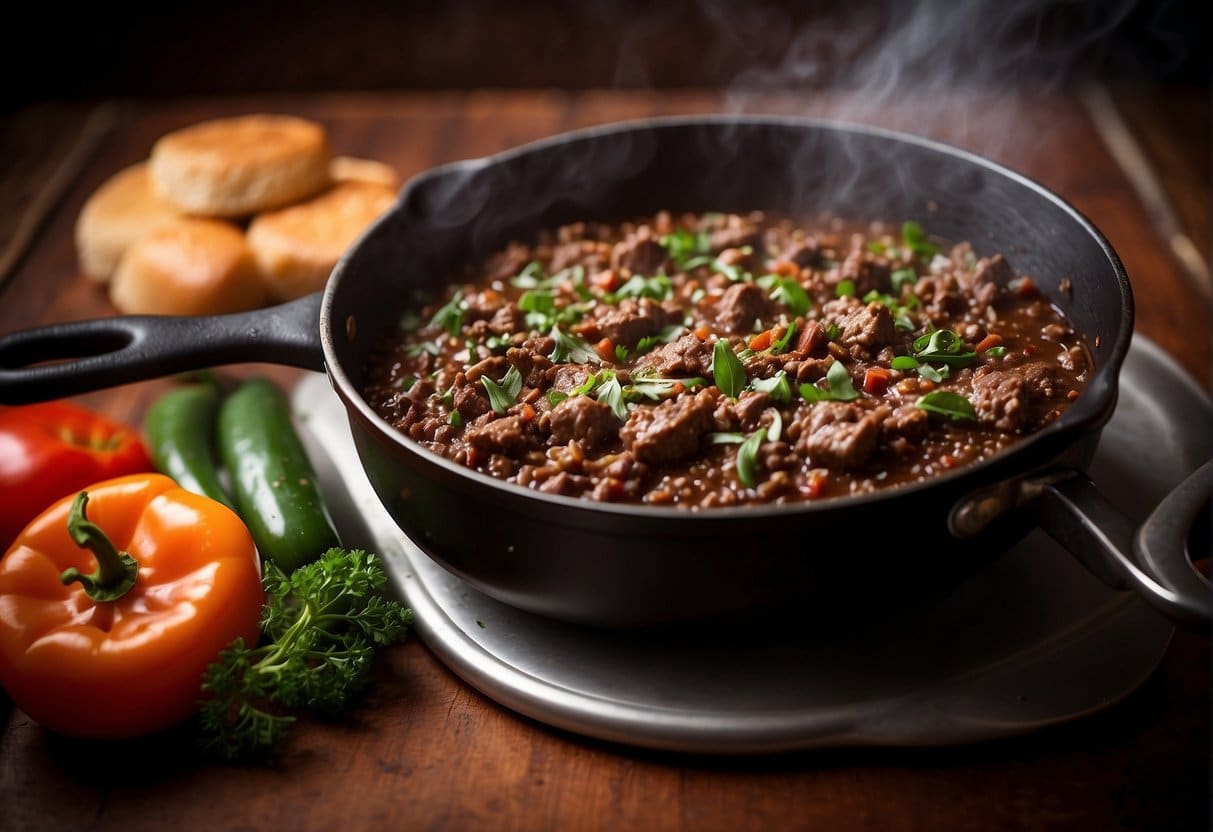
In my culinary adventures, I’ve found that venison mince can be transformed into a variety of comforting classics. Whether stewed, baked, or simmered, each dish showcases the rich flavors of venison complemented by a symphony of spices and ingredients.
Venison Chili
Chili is a robust dish that takes on a wild twist with venison mince. I prefer to brown the meat with onions and garlic, adding a rich depth with tomatoes and dark red wine. A hint of cinnamon and a kick of chili powder make my venison chili both warming and invigorating.
Venison Casserole
For a hearty venison casserole, I layer venison mince with root vegetables and fresh rosemary. A topping of sliced potatoes becomes perfectly golden in the oven. I sometimes enrich the dish with a dollop of suet, ensuring a moist and flavorful bite.
Venison Ragu and Pasta
I often simmer venison mince into a velvety ragu, incorporating a splash of wine and a can of crushed tomatoes. This savory sauce coats pasta beautifully, and a grating of nutmeg adds a subtle complexity that elevates the entire experience.
Mince Pies and Christmas Specials
Around the holidays, I enjoy making mincemeat pies with venison mince, featuring cranberries, raisins, a splash of port or rum, and a blend of nutmeg, cinnamon, and mace. These festive pies are a nod to tradition with a deliciously gamey update.
Accompaniments and Side Dishes
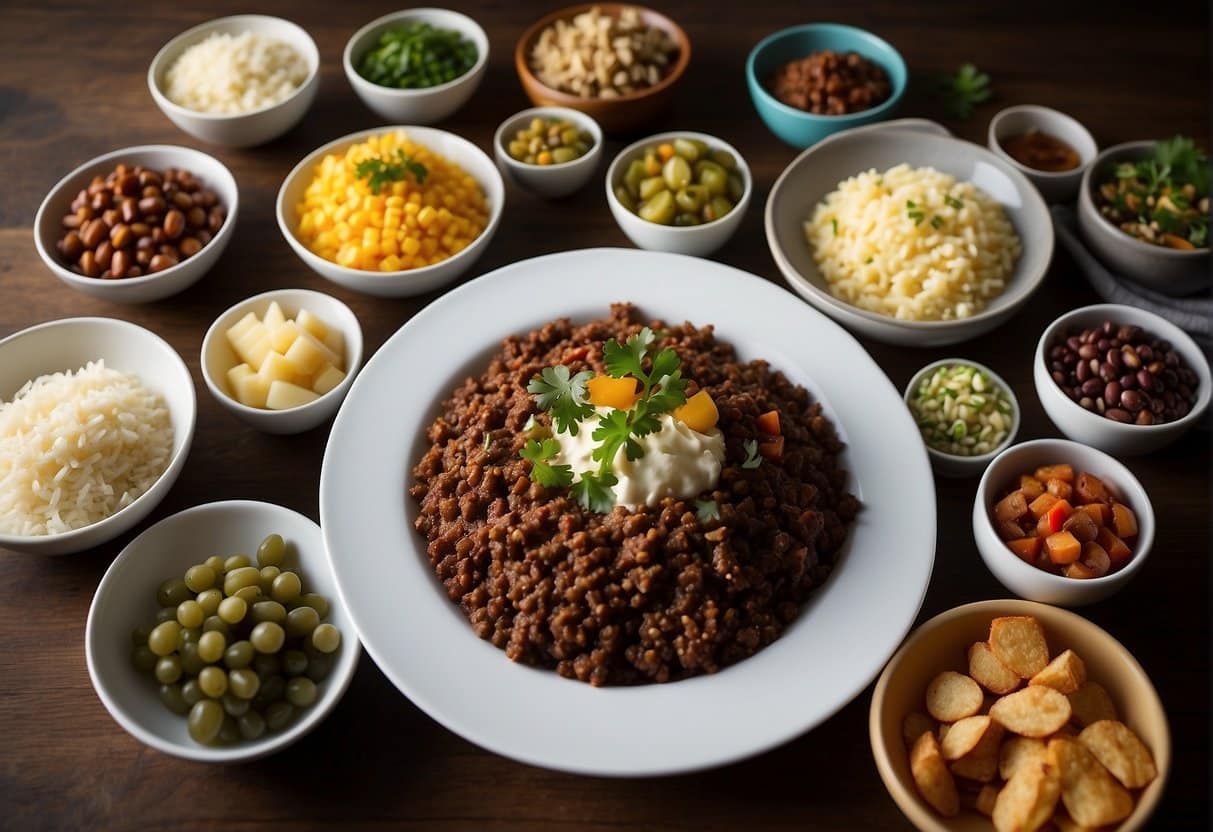
Choosing the right accompaniments and side dishes can elevate a simple venison mince recipe into a well-rounded meal. I find that the richness of venison pairs exceptionally well with hearty potato dishes, nutritious rice and grains, and vibrant vegetable sides.
Potato Dishes
Potatoes, with their versatile nature, are a staple accompaniment to venison mince. I recommend serving venison with a side of steak fries or a creamy mashed potato. The latter is particularly delightful when made with a touch of garlic and herbed butter for added flavor.
- Roasted: Cut potatoes into wedges, toss with olive oil, rosemary, salt, and pepper, and roast until golden.
- Mashed: Boil potatoes until tender, mash with milk, butter, and a pinch of nutmeg for a rich and smooth texture.
Rice and Grains
When it comes to grains, a simple yet flavorful rice pilaf makes for a subtle side that complements the gaminess of venison mince. Alternatively, opt for quinoa or barley as nutritious and hearty choices that absorb flavors beautifully.
- Pilaf: Sauté onions and carrots in butter, add rice, broth, and seasonings, and cook until fluffy.
- Quinoa: Cook quinoa in vegetable stock, and finish with chopped herbs for a burst of freshness.
Vegetable Sides
The right vegetables can add both color and nutrition to a venison mince dish. Go for a combination of roasted vegetables like carrots and parsnips or a bright cucumber salad for a refreshing contrast.
- Roasted: Toss an assortment of vegetables with olive oil and roast until caramelized.
- Salad: Combine cucumber, dill, vinegar, and oil for a light side dish.
In my experience, these accompaniments not only enhance the flavors of the venison but also ensure a balanced meal.
Alternative Preparations
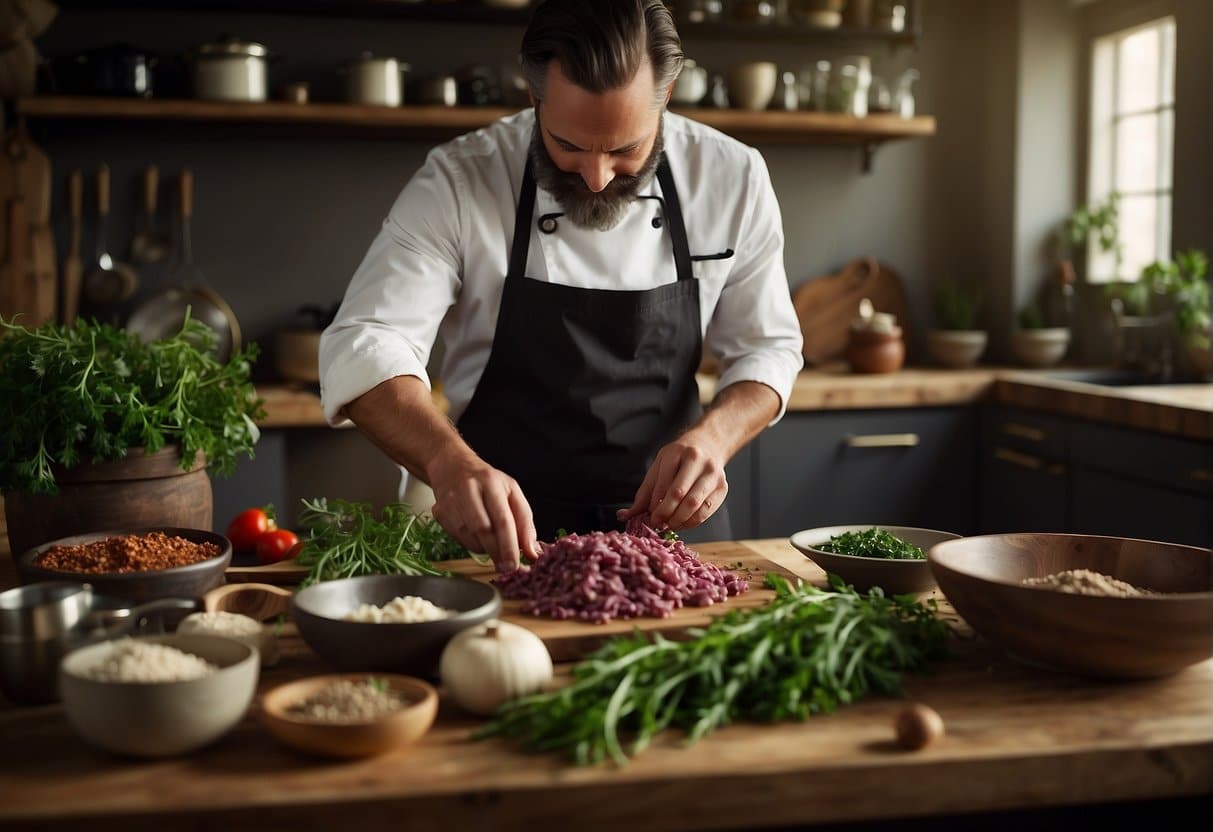
In exploring varied ways to employ venison mince, I’ve found approaches that range from perfect game day indulgences to lighter meal options, as well as vegetarian adaptation strategies that maintain the dish’s essence.
Game Day Snacks
For those game day gatherings, venison mince can become the centerpiece of hearty snacks. Venison Chili Nachos are a favorite; simply top tortilla chips with a robust venison chili, sprinkle with cheese, and broil until melted. Also, Venison Sliders using lean venison mince mixed with diced onions and peppers provide a flavorful twist to the traditional beef patties, paired with mini buns and a dollop of aioli.
Lighter Venison Mince Options
I appreciate nutritious meals, so I often substitute venison for beef mince in recipes for a leaner option. A fresh Venison Taco Salad involves ground venison sautéed with taco seasoning served over mixed greens with corn, tomatoes, and a light vinaigrette. On the side, I might serve Stuffed Peppers with venison mince and quinoa mixed with spices, providing a fulfilling yet balanced dish.
Vegetarian Substitutes
Even vegetarians can enjoy dishes typically made with venison mince, by substituting with alternatives like lentils or textured vegetable protein. Vegetarian Mince Pies mirror traditional recipes but use minced mushrooms and lentils, combined with seasonal spices and diced apples for a comforting treat. Who says bacon can’t be included? I’ve found coconut bacon to be an excellent stand-in for the real thing, adding a satisfying crunch to these vegetarian dishes.
Finishing Touches
In preparing venison mince recipes, the final steps are crucial to enhance the flavor and presentation. It’s about choosing the right herbs and preparing a sauce that complements the rich taste of the meat perfectly.
Herbs and Garnishes
I often reach for parsley and rosemary as my go-to finishing herbs for venison mince. The fresh, grassy notes of parsley brighten the dish, while the piney aroma of rosemary pairs well with the gamey flavors. I recommend chopping these herbs finely and sprinkling them over the dish just before serving to retain their vibrant color and aroma.
Sauces and Gravies
A velvety sauce can transform venison mince from good to exceptional. I make sure to use a high-quality beef stock as the foundation for my gravies, and sometimes, I add a bit of flour to thicken the mixture to the right consistency. If I’m feeling indulgent, a pat of butter whisked in at the end can add a luxurious gloss to the sauce.
By paying attention to these finishing touches, the venison mince dish I present is not only flavorful but also visually appealing.
Advanced Tips and Tricks
When preparing venison mince recipes, applying expert techniques can elevate the meat’s rich and distinct taste. My experience allows me to share some specific strategies to enhance flavors and ensure the quality remains intact when freezing and reheating.
Enhancing Flavors
Venison mince, with its unique gamey profile, pairs wonderfully with bold flavor accents. To deepen the taste, I often add a sprinkle of brown sugar which complements the meat’s natural flavors without overwhelming it. Another secret of mine is to incorporate a dash of clove or coriander, which imparts a warm, spicy undertone that works well with venison’s robust character.
When looking to create a richer sauce or gravy for the mince, a splash of red wine proves indispensable. The acidity in the wine tenderizes the meat and adds a complexity that water or broth alone cannot achieve. Likewise, a drizzle of molasses or honey not only sweetens the dish subtly but also gives a beautiful glaze that’s visually appealing.
| Ingredient | Quantity | Purpose |
|---|---|---|
| Brown Sugar | 1 tablespoon | Balances gamey flavors |
| Clove | 1/4 teaspoon | Adds warming spice |
| Coriander | 1/2 teaspoon | Brings a hint of earthiness |
| Red Wine | 1/2 cup | Enhances sauce, tenderizes meat |
| Molasses | 1 tablespoon | Sweetens and adds glaze; honey is an alternative |
Freezing and Reheating
Venison mince freezes exceptionally well, which makes it convenient for future meals. I ensure that any excess juices from cooking are retained, as they help keep the mince moist when reheated. Before placing the mince in the freezer, I let it cool completely and use airtight containers or freezer bags to prevent freezer burn.
When reheating venison mince, it’s best to thaw it in the refrigerator overnight. I gently reheat it on the stove over low heat, sometimes adding a bit of broth to refresh the flavors. It’s crucial to avoid microwaving, as this can dry out the meat and lead to uneven heating.
Remember that taking these steps will help maintain the quality and taste of your venison dishes, ensuring that each bite is as good as the first.
Sustainable Cooking with Venison
When cooking with venison, I prioritize sustainability at every step. This involves choosing ethically sourced game and implementing practices to reduce waste and reuse resources, particularly water, which plays a significant role in the preparation and cooking process.
Selecting Ethical Sources
My approach to selecting venison revolves around ethical sourcing from local hunters or suppliers who practice sustainable hunting methods. This means I look for providers who maintain a healthy deer population and preserve the natural habitat. Venison, as a game meat, has a lower carbon footprint compared to conventional livestock, making it a more environmentally friendly option.
Waste Reduction and Reuse
To further promote sustainability, I focus on reducing food waste when cooking with venison. This includes using as much of the venison cuts as possible, from the loin to the ground mince. For instance, bones can be used to make a rich stock, and any trimmings can enhance the flavor of stews or be mixed into pet food. Water should be used sparingly; collected rainwater or leftover water from washing vegetables can be repurposed to clean non-edible parts of the venison or for watering plants.
Health and Nutrition
In my exploration of venison mince recipes, I’ve found that they offer a robust nutritional profile. As a lean meat, venison provides essential nutrients with lower fat content compared to conventional meats.
Dietary Considerations
Venison is a game meat known for its high protein content and low fat levels, making it an excellent choice for those monitoring their fat intake. A 3-ounce serving typically contains about 24 grams of protein and just 2 grams of fat. Moreover, venison is rich in vitamins B12 and B6, which are crucial for nerve function and energy metabolism. It is also a good source of iron which is essential for transporting oxygen in the blood.
When preparing venison mince dishes, it’s important to consider the salt and oil used in recipes. Opting for low-sodium alternatives and using oils rich in unsaturated fats, like olive oil, can maintain the health benefits of the venison.
Balanced Meal Planning
Pairing venison mince with a variety of vegetables and whole grains can lead to a well-rounded meal. Including a mix of colorful vegetables ensures an intake of essential vitamins and minerals, and incorporating whole grains contributes to necessary fiber intake. When planning a venison-based meal, I aim to balance macronutrients and provide a spectrum of nutrients without excessive calories.
By integrating venison into a meal plan with mindful choices about accompanying ingredients, you can benefit from its nutritional value while enjoying a delicious and hearty dish.
Recipes and Cooking Guides
In my experience, venison mince is a versatile ingredient that can elevate traditional dishes with its rich flavor. Here, I’ll guide you through some satisfying recipes including savory meatballs, a hearty stew, and a sumptuous baked pie.
Venison Meatballs
For Venison Meatballs, my go-to recipe involves a mix of ground venison mince seasoned with black pepper, cumin, and paprika. These spices complement the venison’s robust taste and create a perfect blend for meatballs that are juicy and aromatic. For each pound of venison, I recommend using:
- 1 tsp black pepper
- 1 tsp cumin
- 1/2 tsp paprika
- 1/2 tsp oregano
Mix these with the mince, form them into balls, and brown them in a skillet before adding them to your favorite sauce.
Hearty Venison Stew
My Hearty Venison Stew starts with browning the venison mince in a large pot. I then add chopped carrots and other seasonal vegetables, infusing the stew with earthy flavors and added nutrition. Here’s a simple list of ingredients to get you started:
- 1 cup venison mince
- 2 large carrots, diced
- Salt and pepper to taste
- Herbs such as oregano for added depth
Allow the stew to simmer for at least an hour, which allows the venison to become tender and the flavors to meld beautifully.
Baked Venison and Vegetable Pie
Finally, my Baked Venison and Vegetable Pie is a hearty showstopper with layers of venison mince, diced carrots, and a golden pastry crust. It’s a filling dish that’s as delicious as it is comforting. To make the filling, you’ll need:
- 1 cup venison mince
- 1/2 cup diced carrot
- Seasonings such as salt, pepper, and thyme
Fill the pastry with the savory mince and vegetable mixture, then bake until the crust is puffed and golden. This creates a memorable meal perfect for cold evenings or a family dinner.
Pairing with Beverages
When preparing venison mince recipes, the right beverage can elevate the dish. I’ll guide you through selecting the perfect wine or non-alcoholic drink to complement the rich flavors.
Wine Pairings
Red wine is a classic choice to pair with venison mince. I recommend a Cabernet Sauvignon or Merlot with herbal notes that mirror the earthy flavors of the venison. These wines bring out the best in dishes that incorporate herbs like rosemary or thyme. Another excellent option is a full-bodied Shiraz, which can stand up to the robust taste of venison. If you’re using a beef stock in your recipe, these wines also pair beautifully, as the depth of the stock resonates with the complex flavors of the red wines.
Non-Alcoholic Beverages
For those preferring a non-alcoholic choice, options abound. A rich, homemade beef stock can serve as a base for a hearty, warming drink, especially when spiced and simmered. Alternatively, a glass of water infused with herbs such as rosemary or mint can cleanse the palate between bites without overpowering the venison’s nuanced flavors. This simple beverage also ensures that the tastes of your carefully prepared dish remain at the forefront.
For both wine and non-alcoholic beverages, the key is to complement and not compete with the venison mince, letting each sip enhance the experience of every savory bite.
Frequently Asked Questions
In this section, I’ll address some common queries about working with venison mince, offering cooking tips and recipe ideas to enhance your culinary experience with this lean and flavorful meat.
What are some easy ways to prepare venison mince?
Preparing venison mince is quite straightforward. I often start with a simple sauté of onions and garlic in olive oil, then brown the mince before adding a variety of seasonings, vegetables, or sauces. This method forms the base for countless dishes, from spaghetti Bolognese to chili.
How can I use venison mince to make a flavorful curry?
For a rich and aromatic curry, I like to infuse the venison mince with classic spices like cumin, coriander, turmeric, and garam masala. Slowly simmering the mince in a tomato-based sauce allows the flavors to meld beautifully. Coconut milk can add a creamy texture and temper the spices’ heat.
What are the best practices for cooking venison mince in a slow cooker?
When cooking venison mince in a slow cooker, I ensure it’s thoroughly browned first to deepen the flavors. Then, I combine it with robust ingredients such as root vegetables, stock, and herbs, setting it to cook slowly, which tenderizes the meat and enriches the dish’s overall savoriness.
Are there healthy recipes that feature venison mince as the main ingredient?
Absolutely! Venison mince is an excellent choice for healthy recipes due to its high protein content and lower fat compared to other meats. I use it in recipes like stew, where it’s paired with a bounty of vegetables and natural seasonings for a nutritious meal.
Can you share a venison burger recipe that highlights the meat’s natural flavors?
For venison burgers that showcase the meat’s natural flavors, I keep it simple: combine the mince with a little salt and pepper, form into patties, and grill them to medium-rare. Toppings like caramelized onions or a slice of sharp cheddar can complement without overpowering the venison.
How do I make a classic venison mince pie?
To create a classic venison mince pie, I utilize a rich, shortcrust pastry filled with seasoned venison mince, often enhanced with a touch of red wine and aromatic herbs. Baking until the pastry is golden brown results in a pie that’s both comforting and satisfying, perfect for a hearty meal.


